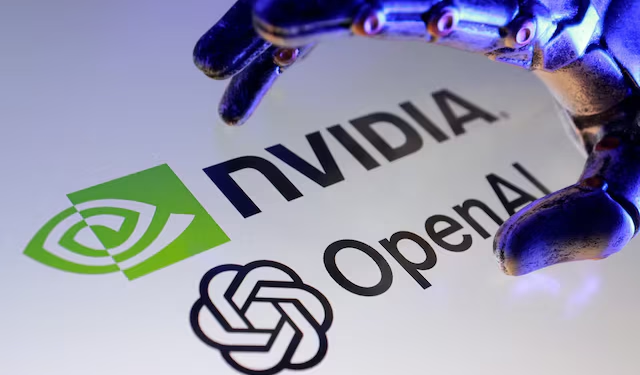A new $100 billion partnership between Nvidia, the powerhouse in AI chips, and OpenAI, the company behind ChatGPT, has set off alarms among experts who see it as a potential chokehold on the future of artificial intelligence. On paper, it’s a business deal: Nvidia secures a customer for millions of its high-end chips, while OpenAI gains a reliable supply line for the hardware that makes its models possible. But the scale, concentration, and timing of this move suggest something bigger—an alliance that could further concentrate control of America’s most important emerging technology in the hands of only a few players.
Andre Barlow, an antitrust lawyer, called it out directly: the partnership “raises significant antitrust concerns.” The warning goes beyond legal semantics. For decades, Americans have been told that competition spurs innovation, lowers costs, and serves the consumer. But when a handful of mega-firms tie themselves together with staggering sums of money, it risks creating exactly the kind of closed marketplace that stifles smaller innovators before they ever get the chance to compete.
This is not simply about a business deal—it’s about the trajectory of America’s technological dominance. Under President Donald Trump, the priority has been clear: unleash U.S. strength in artificial intelligence by cutting through bureaucratic red tape and encouraging growth. Regulators under Trump have pushed to balance that growth with common-sense antitrust enforcement, not to suffocate innovation but to prevent monopolistic behavior that leaves no room for challengers. It’s a recognition that without guardrails, giants can easily turn into gatekeepers.
Nvidia currently controls more than half of the global market for GPUs—the chips that are the backbone of AI models and data centers. With that kind of dominance, critics like Vanderbilt professor Rebecca Haw Allensworth warn the company could be tempted to give OpenAI preferential treatment: “They’re financially interested in each other’s success. That creates an incentive for Nvidia to not sell chips to, or not sell chips on the same terms to, other competitors of OpenAI.”
Nvidia insists otherwise, claiming, “We will continue to make every customer a top priority, with or without any equity stake.” But history has shown that when profit and partnerships align, good intentions often take a backseat to market power. OpenAI, notably, did not respond to requests for comment.
The sheer expense of frontier AI underscores why this deal matters so much. Industry experts note that the cost of chips, data centers, and power has made it nearly impossible for anyone but the wealthiest firms to stay in the race. Sarah Kreps of Cornell put it bluntly: “The cost of chips, data centers and power has pushed the industry toward a handful of firms able to finance projects on that scale.” In other words, unless you’re backed by billions, you’re locked out.
Nvidia’s financial filings show how concentrated its customer base already is, with just two unnamed buyers accounting for nearly 40% of its revenue in a single quarter. Add a $100 billion pact with OpenAI to that equation, and the danger becomes clear: smaller startups and competitors could be squeezed out before they ever scale, leaving innovation in the hands of only a few corporate giants.
It’s worth remembering that the Department of Justice and the Federal Trade Commission under Joe Biden often took a heavy-handed approach toward Big Tech, issuing broad warnings about anti-competitive behavior. But the Trump administration has approached it differently—continuing targeted enforcement while resisting the temptation to smother innovation with overreach. DOJ antitrust chief Gail Slater recently reinforced that balance, saying enforcement “must focus on preventing exclusionary conduct over the resources that are needed to build competitive AI systems and products.” That means the government should watch for behavior that locks competitors out of vital resources—chips, distribution, or data access—without tying the industry down with layers of red tape.
The Nvidia–OpenAI partnership is not just a business headline. It is a defining moment in the fight over who controls the future of artificial intelligence and whether America’s promise of free enterprise will extend to this next frontier. The question now is whether policymakers will keep the playing field open or allow Big Tech alliances to harden into monopolies that dictate the pace, price, and direction of innovation itself.




















